Manavsadhna activity centre is indeed an epitome of integrated architectural design which attempts to resolve several perennial problems of the developing world. The activity centre is built entirely with the recycled waste material from domestic centre. Firstly, by recycling waste it addresses the issue of environmental pollution as such waste otherwise simply gets thrown away at dump fill sites. Secondly, by converting the waste into building product it creates employment opportunity for the urban poor and thereby economic empowerment. Thirdly, the products locally developed are cheaper and better than the conventional alternatives thereby making buildings affordable. As activity centre it functions truly for the poorest community of the city. It is located in one of the largest slums of the city (inhabiting over hundred thousand people) and gets used as informal school for young children, afternoon it provides vocational training to the youth and in the evening it turns into community centre with health facilities, recreational and religious activities, and festivities. Even medical camps are held here for the settlement. The centre has been built with the involvement of local unskilled and semi skilled persons and its construction techniques and detailing has been done keeping such mode of production in mind. The building components developed through waste recycling have been tested for their performance and have measured superior to conventional practices. These have also been applied integrally such that construction engineering, functional needs as well as aesthetics emerge as mutually complimentary. Waste such as Flyash, dump fill site residue, plastic bottles, glass bottles, crate wood, re bars, packaging wrappers, oiltin containers etc. have been recycled as building material. The building has proven extremely cost effective and has become open catalogue for different walling, roofing, flooring and panelling options.Building also uses least artificial energy for its environmental comfort. Community has begun to emulate these in their homes and so have several other structures as well as organisations. For example crèche for young children and activity centre for women are getting added within neighbourhood with similar concepts. Thus it has been an effective role model to prove that cost is not a constraint but is rather a creative challenge and as such there is more creative opportunity in generating architecture for the have-nots. Contextually appropriate architecture, truly evolving from the needs and resources of its people and place. The campus design has won over seven international as well as national award for its aesthetics (design), Creative use of construction material (Engineering) as well as Environmental concerns (sustainability).
Nearly 27.4 million tonnes of waste is produced daily in the urban centers of India. Cities like Ahmedabad alone produce 2750 metric tonnes. Unfortunately nothing really gets processed of the same. This waste is simply dumped openly in the landfill sites, which uses enormous volumes of fossil fuel, creating an altered, polluted, unsafe and unhealthy landscape. An activity centre at Rama Pir Tekra, Wadaj in Ahmedabad has been one small attempt in the direction of recycling municipal/domestic waste into building materials. The activity centre is located amidst the largest squatter settlement of Ahmedabad, and was created under the initiative of the social NGO, Manav Sadhna. The multi-purpose activity centre serves as an informal school for young children, provides evening education for adults and serves as a training centre and activity workshop for the manufacturing of craft based products by women and elderly. The campus also includes a dormitory, an administrative unit and an all-religion meditation unit. The campus is built using components prepared through recycling municipal/domestic waste. This process simultaneously addresses environmental concerns, economic i
2005
2006
Manavsadhna Activity Centre by Yatin Pandya in India won the WA Award Cycle 4. Please find below the WA Award poster for this project.
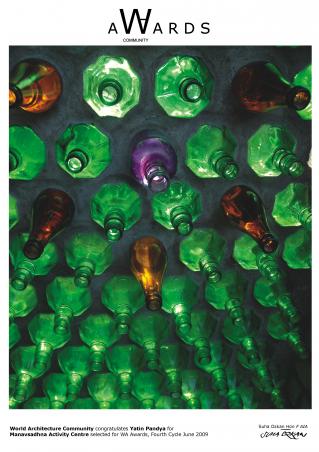
Downloaded 1956 times.
Favorited 3 times

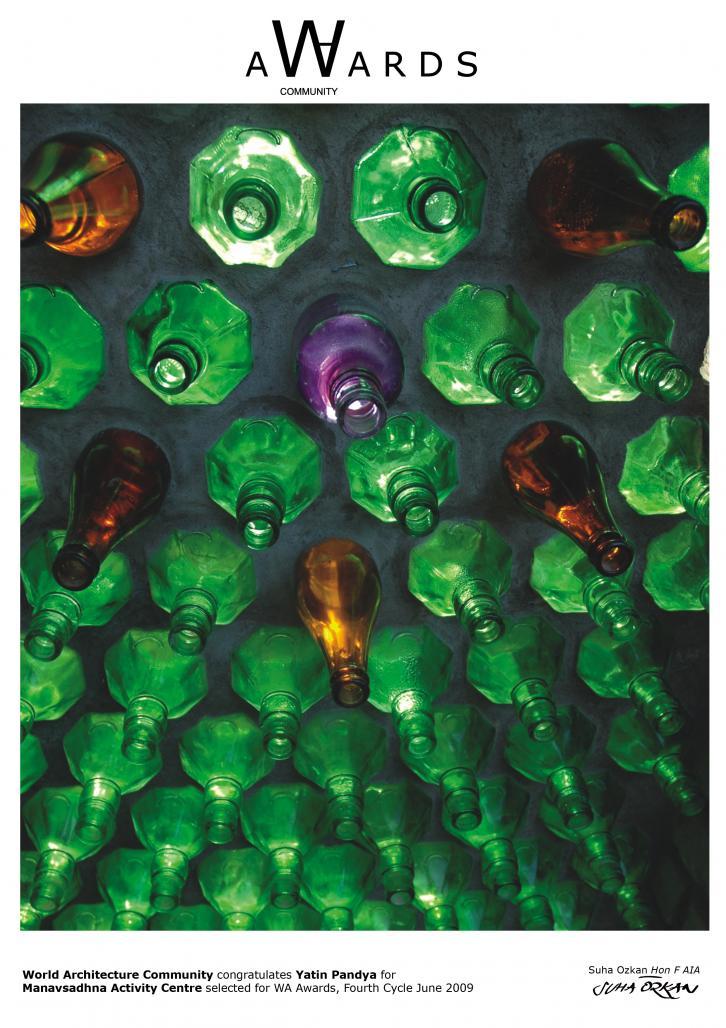

.jpg)
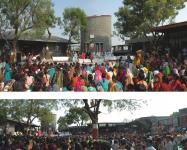
.jpg)
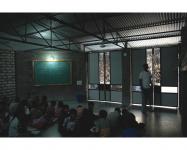
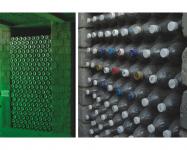
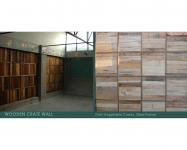

.jpg)
